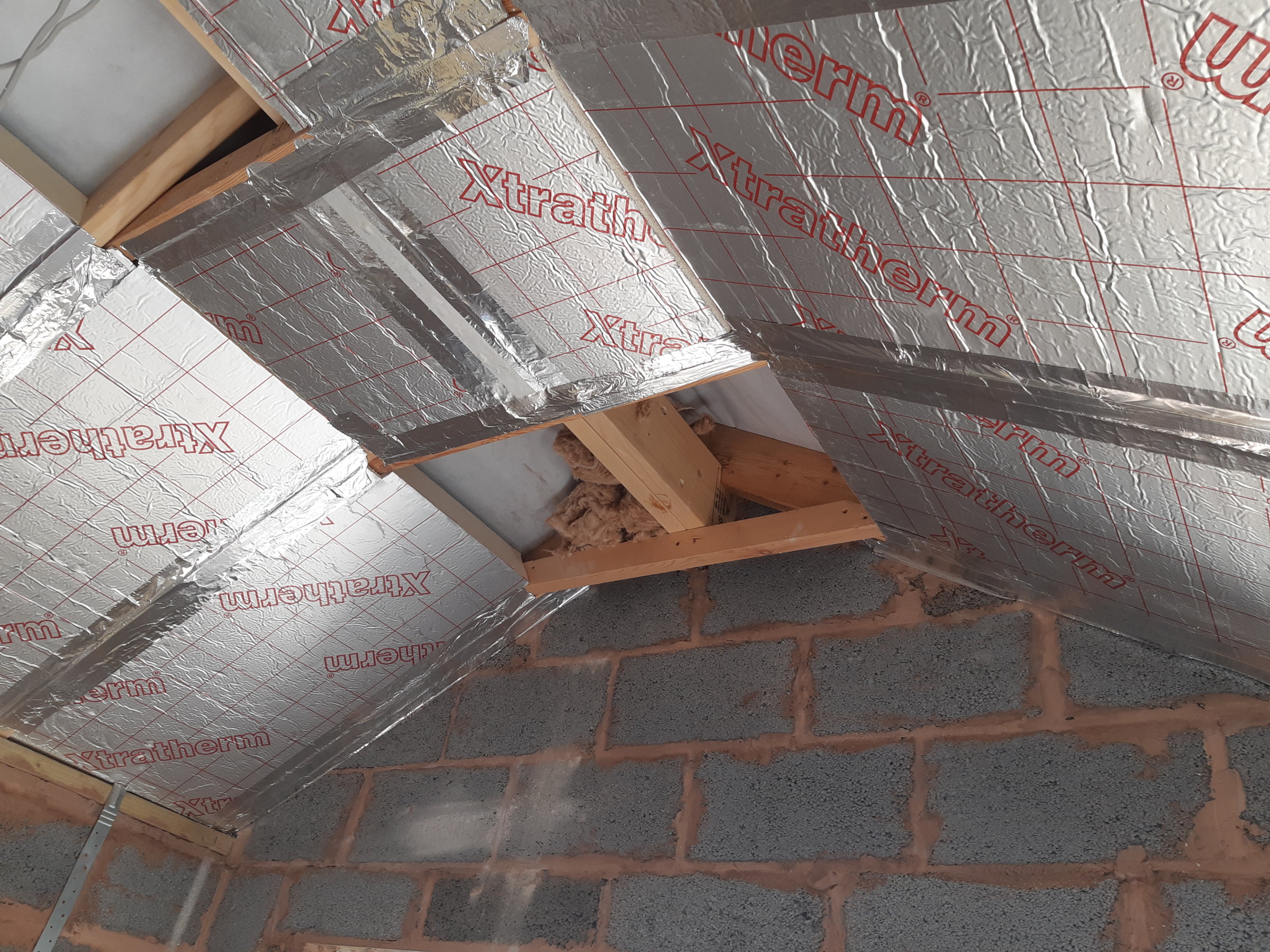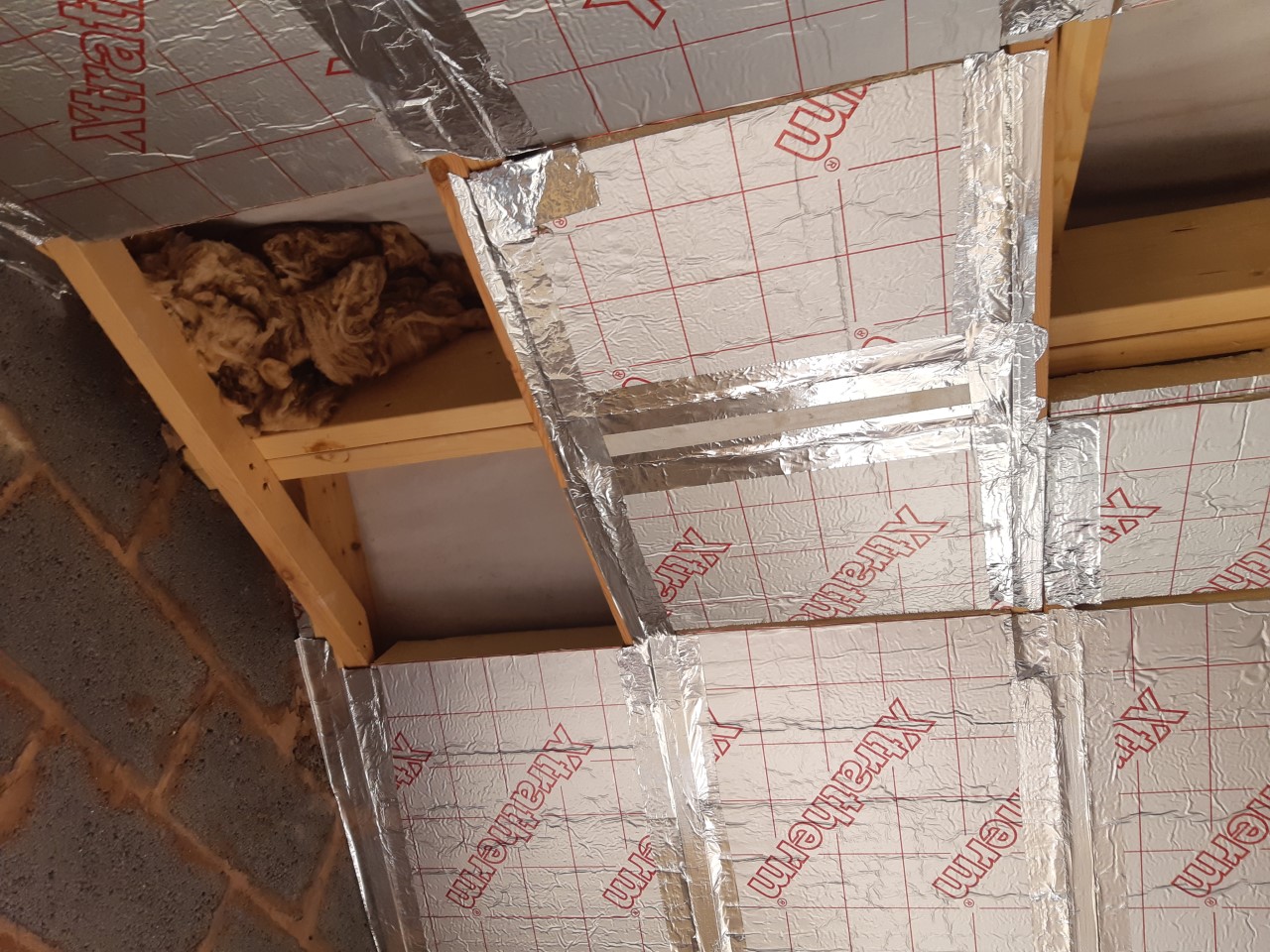After sorting out our ventilation issue in our flat cold roof, we are now at the point of putting in the insulation.
I am hearing contradicting things at the moment, that we need to use gapotape due to the recent changes in building regs. or can we simply ensure the celotex is cut correctly to size, and any gaps are closed using expanding foam?
Our plan is to the do latter:
We have 7*2 rafter joists, with a 23m^2 area space (25m^2 - 2x1 skylight) see image attached.
We have the following:
- 120mm Celotex
- Expanding Foam
- Aluminium foil tape
- SFTV Reflective vapor membrane layer
- Double sided Butyl Tape
Do you guys think this approach is okay, or do you reccommend any other adhering to the new regs?

I am hearing contradicting things at the moment, that we need to use gapotape due to the recent changes in building regs. or can we simply ensure the celotex is cut correctly to size, and any gaps are closed using expanding foam?
Our plan is to the do latter:
We have 7*2 rafter joists, with a 23m^2 area space (25m^2 - 2x1 skylight) see image attached.
We have the following:
- 120mm Celotex
- Expanding Foam
- Aluminium foil tape
- SFTV Reflective vapor membrane layer
- Double sided Butyl Tape
Do you guys think this approach is okay, or do you reccommend any other adhering to the new regs?
Last edited:





